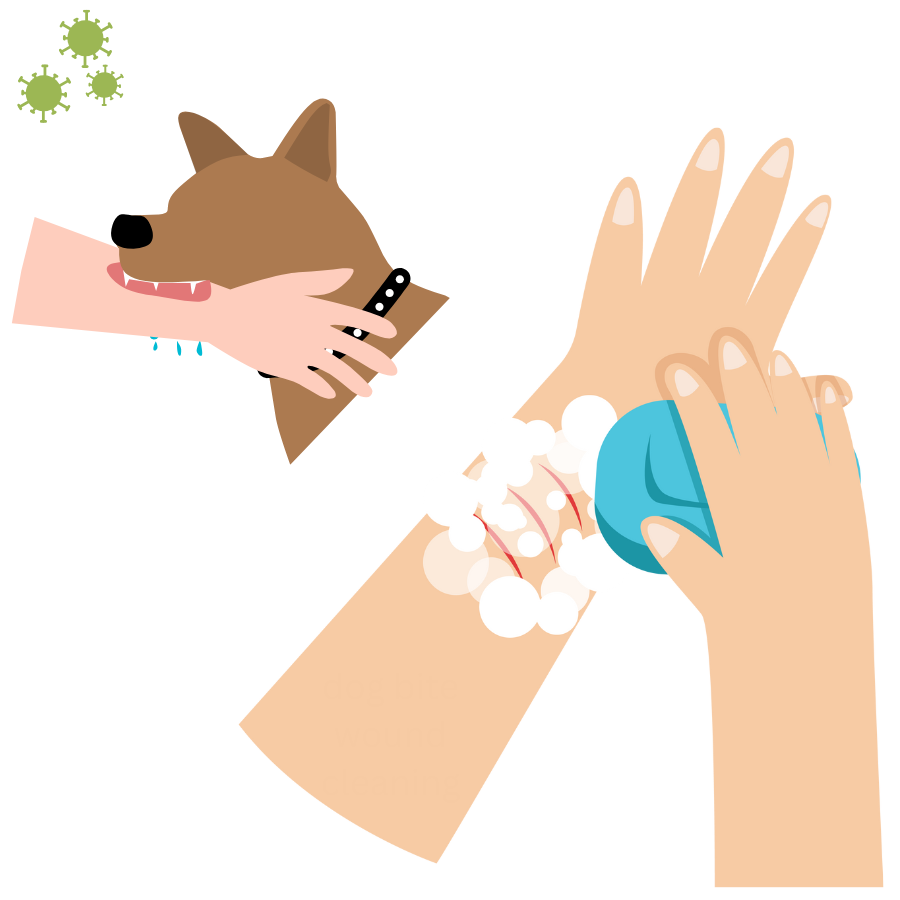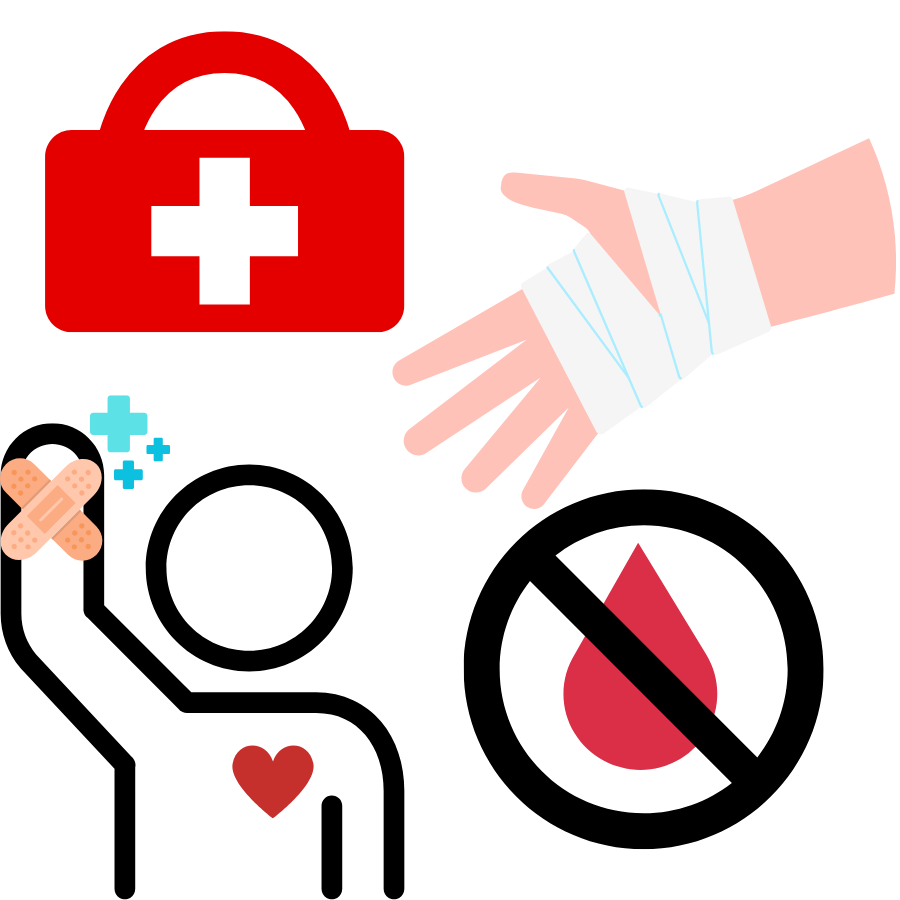What Immediate Medical Care Is Required After a Dog Bite?
Essential Steps to Take Right After a Dog Bite to
Ensure Proper Care and Prevent Complications

Dog bites can happen unexpectedly and can range from minor scratches to more serious injuries. Whether the bite is from your own dog or a stray, knowing what immediate medical care is required can help prevent infections, reduce the risk of serious complications, and ensure a faster recovery. In this blog, we’ll outline the key steps to take immediately after a dog bite to protect your health and promote healing.

Why Immediate Medical Care is Crucial After a Dog Bite
A dog bite can lead to infections, nerve damage, or in rare cases, life-threatening conditions like rabies. Prompt medical care is essential for minimizing these risks. Even minor bites can lead to complications if not treated correctly. Getting the right care as soon as possible can reduce the chances of infection and speed up recovery.
Clean, Running Water
- How to Use: The first step is to wash the bite with clean, running water. This helps remove dirt, saliva, and other debris from the wound.
- Why It's Safe: Water is gentle and won’t irritate the skin or tissue around the wound. It also helps to flush out harmful bacteria.
Mild Soap
- How to Use: After rinsing the wound with water, use a mild soap (like unscented baby soap) to clean the area gently.
- Why It's Safe: Mild soap helps remove any remaining bacteria or debris without causing irritation. Avoid using harsh soaps with fragrances or alcohol.
Saline Solution (Sterile)
- How to Use: You can use a sterile saline solution to rinse the wound after washing with soap and water. Saline solution can be purchased at a pharmacy, or you can make your own by mixing 1 teaspoon of salt in 1 cup of warm water.
- Why It's Safe: Saline solution is gentle on the skin and helps cleanse the wound without irritating or drying it out.
Antibiotic Ointment (e.g., Neosporin)
- How to Use: After cleaning the wound, apply a thin layer of antibiotic ointment to help prevent infection.
- Why It's Safe: Antibiotic ointments like Neosporin are effective at preventing infection and promoting healing. They provide a protective barrier on the wound.
Sterile Gauze or Bandage
- How to Use: Cover the wound with a sterile gauze pad or bandage to protect it from dirt and bacteria.
- Why It's Safe: A bandage helps to keep the area clean and reduces the risk of further contamination.
Hydrogen Peroxide (Low Concentration)
- How to Use: If you don’t have saline solution available, you can use a low concentration of hydrogen peroxide (3%) to disinfect the wound. However, use it sparingly, as frequent use can harm healthy tissue.
- Why It's Safe: Hydrogen peroxide helps kill bacteria but should not be overused because it can irritate the wound.
Alcohol-Free Antiseptic Wipes (Optional)
- How to Use: You can gently wipe the area around the wound with alcohol-free antiseptic wipes if necessary.
- Why It's Safe: Alcohol-free wipes are less likely to irritate the skin compared to those containing alcohol, but they can still help with cleaning the area around the bite.
Rubbing Alcohol
- Why to Avoid: Rubbing alcohol can be overly harsh on open wounds. While it’s commonly used as a disinfectant, it can dry out the wound and surrounding skin, leading to irritation and a slower healing process.
Hydrogen Peroxide (High Concentration)
- Why to Avoid: Hydrogen peroxide is a common antiseptic, but in higher concentrations, it can damage healthy tissue around the wound, impairing the healing process. Lower concentrations (like 3%) are generally safer but still should be used sparingly.
Iodine (Betadine)
- Why to Avoid: While iodine-based solutions like Betadine can disinfect wounds, they may also cause skin irritation in some people, especially if applied frequently. Overuse can slow healing and cause the skin to become dry.
Bleach
- Why to Avoid: Bleach is a powerful disinfectant but should never be used on open wounds. It can cause severe irritation and damage to the skin, leading to a higher risk of infection and delayed healing.
Strong Antiseptic Creams
- Why to Avoid: Some over-the-counter antiseptic creams contain strong chemicals (like alcohol or other drying agents) that may harm the wound rather than help it heal. These can lead to more dryness and irritation, making healing more difficult.
Perfumed or Alcohol-Based Lotion
- Why to Avoid: Lotions that contain fragrances or alcohol can irritate an open wound. The alcohol may cause a stinging sensation and dryness, which can slow the healing process.
Astringent Face Wipes
- Why to Avoid: Products like face wipes containing alcohol or strong astringents are designed to cleanse but can irritate cuts or wounds. They can dry out the skin and make it more prone to infection or scarring.
When to Seek Medical Attention:
- Deep or Severe Bite: If the bite is deep, large, or caused by a stray dog, seek medical help immediately. A doctor may need to clean the wound more thoroughly and decide if you need a tetanus shot or rabies vaccine.
- Signs of Infection: If the wound becomes red, swollen, warm, or starts oozing pus, consult a doctor as these are signs of infection.
- Rabies Risk: If the dog was unvaccinated or unknown, talk to a healthcare provider about rabies vaccination, especially if the dog was acting abnormally.
By following these steps, you can ensure that the dog bite is cleaned properly and reduce the risk of infection.
Immediate Action Can Save Your Health
Knowing what immediate medical care is required after a dog bite can make all the difference in preventing serious complications. Clean the wound, stop the bleeding, apply antiseptics, and seek medical attention when necessary. The faster you act, the better your chances of avoiding infection or more severe injuries.




